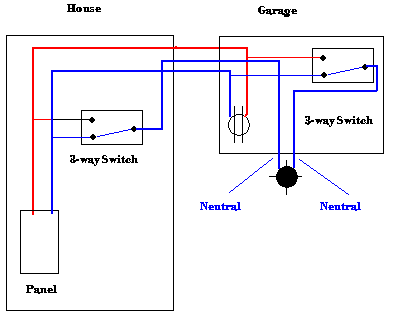Renting a room in an old house. The landlady is one of the rare good ones and cooks for me somtimes so I’m trying to be handy where I can.
This light in my office died, and a few others in the house are in dire need of replacing. Rusted and covered in decades of caked on dust, probably hazardous.
I keep seeing units like this. https://a.co/d/iU3hAd3
But I’m wondering if I should get a few of those or get another bulb style ceiling lamps and just use LED bulbs?
The next tenant after you might not be so handy. It would be easier for the average person just to change a bulb if they needed to. I’d go with the fixture that uses replaceable LED bulbs.
Agreed. The fixtures with non-replaceable lights are a giant headache waiting to happen down the road. Always go with the replaceable bulb fixtures.
Edit: Not to mention the next person may not like the specific LED in that fixture and may want a brighter or dimmer one. With a replaceable bulb this is a 30s swap; with a non-replaceable bulb it is an entire project that the person may even need to hire a guy to do for them (read: expensive).
Good point I assumed these lasted forever, but I guess that’d be wishful thinking.
I would go with the bulbs
The fixtures are nice but they can have high failure rates and are more difficult to replace, as you have to replace the whole unit.
Bulbs on the other hand are easy to replace if they fail, they’re standardized so anyone can walk to the store and pick up an A19 60W equivalent.
I put that fixture in my kitchen before I sold my old house. I really liked it. But if you want the best bang for your money, just go with light bulb replacement. LEDs won’t last forever and in 10-15 years someone will have to replace that fixture unless they are willing to manually replace the LED strip inside it.
I’ve been using those integrated flat LED fixtures in my place lately. I don’t find them too difficult to install, and at least one of my rooms has a rather low ceiling so I’d rather not have stuff dangling down where I can bonk myself on the head with it.
I haven’t had a single problem but if they die they’re trivially easy – for me – to replace. They’re just held onto the ceiling electrical box with two screws, and the electrical connection is two wire nuts. It’ll take me longer to find and lug my stepladder into position than it will for me to replace one. Light fixtures are dead easy, you don’t even have to find and turn off the breaker. Just turn it off at the switch before you mess with it.
The example you linked is suspiciously expensive. I’m getting these for around $15 each.
If you are going to go the socket-and-bulbs route for any of the reasons raised by the other comments here, make absolutely certain that you don’t get a fixture that is enclosed in any way. Enclosed fixtures will kill LED bulbs quickly, and in extreme cases you’ll go through them faster than filament bulbs.
you don’t even have to find and turn off the breaker. Just turn it off at the switch before you mess with it.
One word of caution here. If the light fixture is hooked up to a three-way switch, it is possible for the light to be off and BOTH sides of the circuit to be hot. This isn’t a common way to wire three-way switches and it isn’t to code anymore, but there are many homes out there with legacy switches wired as such. See: Carter 3-way switch.
Edit: Now with diagram!

As somebody with both, there are pros and cons to each.
The pros of the pre-installed LED light fixtures is that you wire them in and they work. The cons are, all LEDs fail eventually, and when the ones that have the pre-installed LEDs fail, you have to replace the whole thing unless you are incredibly DIY competent.
A second con of the fixtures with pre-installed LEDs is that some of them, especially the cheaper ones, have issues with buzz. When they are turned on you can frequently hear the transformer humming and to some people that is an annoyance. I am one of those people and I have had to re-replace two entire fixtures because of this.
The pros of the replaceable bulb versions are that since all LED bulbs fail eventually, it is much easier to replace their LEDs. The cons are sometimes the appearance of them aren’t as interesting or fun as the ones with the pre-installed LEDs.
They also have issues with flicker, but that is more dependent upon the bulbs. It has become rather difficult to find a good quality replaceable e27 base bulb that does not flicker or buzz long before the bulb actually fails.
However, since you can replace the bulbs it is easier to make sure that the Kelvin rating of the bulbs matches the rest of the bulbs in the room, and for home use I typically recommend 2700k or 3000k.
Finally, in my personal opinion you should not get any light fixture that uses candelabra bulbs as they seem to have a higher failure rate than the e27s.
Price wise, the pre-installed LEDs can often be cheaper than the ones with the external LED bulbs when you factor in the cost of the LED bulbs.
They both typically have the same ease of installation, which is on par with if you can operate a screwdriver you can install them.
Ultimately it comes down to your competence and self confidence.
If it’s an old house going to led fixtures can have issues.
Back in the day it was fine to let a little juice trickle past a closed switch (light switch off)
Because what little went thru, wasn’t enough to turn on an incandescent bulb.
But it’s enough to turn on a led dimmly.
So there’s a decent chance if you install a light like in your link, it will always produce light. Then you have to change out the switches and all types of other stuff.
Especially in a rental, you don’t want to open that can of worms. Just use a conventional fixture.
I had intended to change the switches to dimmers as well. Good to keep them low on migraine days.
Make sure the new switches are rated for “led dimmers” too and you should be fine then.
Don’t just buy the cheapest dimmers or you’ll be buying them and installing them a second time.
That being said, I have had very good luck with the Feit electric dimmers from Costco.
I have five or six of them installed in my house and I have no complaints about their functionality after over a year of continual use.
It seems like you’re leaning toward getting standard light fixtures. Are you looking at the ones with naked bulbs, or those with the glass coverings over the bulbs?
If you’re looking at naked bulbs, and if your landlady doesn’t already have one, you might also consider getting her a lightbulb-changing kit so she can change any dead bulbs without climbing a ladder. Something like this with an appropriate-length pole.
This is anecdotal, but I put in ceiling LEDs in my kitchen and sun room about 11 years ago. About 16 in all. The lights are turned on and off multiple times a day, every day. I have not had a single one fail. Since then I have probably put in nearly twice that many in other places, but they have only been in place for a few years at most and typically get less use. I have not had a single one of these LEDs go out. My guess is because the circuitry can dissipate the heat and that seems to be what kills the replaceable LED bulbs. Speaking of which, over that same time period I have went through more than three dozen replaceable LED bulbs. I think on average I replace at least one bulb every 2-3 months.




